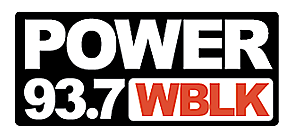
Money Minute: Signs You are Living Beyond Your Means
It seems like reality TV has everyone trying to live the lifestyles of the rich and famous!. Well, Yasmin Young talks with Kawanza Humphrey, VP of KeyBank, are to tell you about the signs that you are living beyond your means!!
Signs You are Living Beyond Your Means
Signs you are living beyond your means
Keeping up with the Joneses? Many of us try, and some of us can. But the truth is, for most of us, it’s bad for our financial wellness. The Joneses are fictitious people who always live better than us. That’s why the real measuring stick of our financial fitness should be ourselves, and the question we should be asking is: can I really afford the lifestyle I’m living? Here are some signs that may suggest you can’t:
- Your credit score is below 600. Your score is a reflection of whether you pay your bills on time, the age of your accounts and your outstanding debt compared to total credit. This will influence your purchasing power, as well as your cost to borrow money.
- You save less than five percent of your income. You should aim to save 10 to 15 percent of your earnings.
- You don’t have an emergency fund. Unexpected and expensive are near inevitabilities in life. You can’t afford to put these emergency costs on your credit card and pay interest on them. It’s a hole that is difficult to dig your way out of.
- Your credit card balances are rising. If you carry a month-to-month balance you are spending more than you can afford. You should be able to pay off your credit card balance in full every month.
- Your monthly house payments account for more than 28 percent of your income. To calculate what percent you spend, divide your monthly mortgage or rent payment by your monthly income.
- You can’t keep up with your bills. You find yourself making late payments or taking cash advances on credit cards to pay bills you once paid with cash.
- You live paycheck to paycheck. You need to start putting aside at least five percent into savings. If you can’t, you need to take a closer look at your budget.
- You have paid an overdraft fee in the past six months.
If you find yourself in any of the above situations, the healthiest thing you can do for your future is to take an honest look at your income, expenses and spending habits. Question every purchase you make, and be disciplined in those that you do. Then make the necessary changes, because it’s easier to live with your hard decisions now than to deal with the consequences of doing nothing later.
Additional online resources from KeyBank:
(This material is presented for informational purposes only and should not be construed as individual tax or financial advice. Please consult with legal, tax and/or financial advisors. KeyBank does not provide legal advice. KeyCorp 2017. KeyBank member FDIC.)
The Hidden Costs of Moving for a New Job
Hidden Costs of Relocating for a New Job
• Relocating for a new position or even a different career path is a reality for many employees. And while the relocation package you're offered might look shiny and appealing, there are hidden costs to relocating that you should be aware of first.• Moving Expenses
o Under the new tax plan, moving expenses for those relocating for a job are no longer tax-deductible (unless you're in the military). This means that you'll be bearing the brunt of any costs not paid up front or reimbursed by your employer. Be sure to ask about moving expenses and which party (you or your employer) is expected to pay for what so that you don't wind up facing an unnecessary reality check on tax day.• Health Insurance
o If you're changing states with your relocation, you might be faced with changing your health plan. That can mean starting over with your deductible, which could be a significant cost for those with high deductible health plans — especially those coupled with health savings accounts (HSAs). Be sure to review your health insurance options and what this will mean for your deductible with your new employer's human resources or benefits department.• Selling Your Home
o You don't want to be stuck paying for two homes. Relocating can mean a hefty living expense tab each month, especially if your existing home doesn't sell within the first 30 days. A slow sale may also inhibit your ability to close on a new home in your new city. Be sure to speak with your employer about how they handle selling your home and helping you secure housing in your new city, along with what happens if your home doesn't sell right away.• Benefits
o A substantial salary jump is one thing, but are you losing valuable benefits by relocating? Be sure to compare the value of the benefits at your current position and the position that requires relocation to ensure that the bigger salary isn't going to be used to make up the difference between what you had and what you've lost.• Cost of Living
o Moving for your career might mean a shift in living expenses. Be sure to do the match before you accept a relocation offer. A cost of living calculator can help you make detailed comparisons, even down to the zip code. You might find a lower salary and lower cost of living puts you way ahead, while a higher salary with a high cost of living leaves you strapped for cash.Simply knowing about these five areas that hold potential for hidden relocation expenses is a smart start. Your next step is to ask questions about each, understand how the relocation package offered addresses each one, and make sure that you're aware of the costs of relocating before you make that career jump. A great final tip is to ask to speak with an employee who recently relocated for tips on unexpected expenses or benefits they've encountered in their new city and position. This way, you'll have first-hand knowledge to add to your relocation conversations.
Additional online resources from KeyBank:
(This material is presented for informational purposes only and should not be construed as individual tax or financial advice. Please consult with legal, tax and/or financial advisors. KeyBank does not provide legal advice. KeyCorp 2017. KeyBank member FDIC.)
Tips for Maintaining Good Credit
Maintaining Good Credit
The best way to maintain good credit is by demonstrating you are a financially responsible borrower. Here are some things you can do to help manage your credit cards and debt effectively while keeping your credit in good standing:1. Seek cards with low interest rates. One advantage of having a good credit score is being eligible for the lowest interest rates available. However, it’s not always easy to find a card with great rates. So look for the card with the lowest rates and best rewards for your lifestyle.
2. Pay bills on time. Always pay your credit card bills on time. Late payments will have a negative effect on your credit score. If you forget to pay bills on time, consider setting up automatic withdrawal from your checking account. KeyBank’s online and mobile banking tools can also help you schedule timely payments. If you have overdue bills, plan to take care of them immediately.
3. Make more than the minimum payment. If you only make the minimum payment to your credit card balance, costly interest payments will be added each month. If you can’t pay your credit card balance monthly, the next best solution is to pay more than your minimum monthly payment and stop borrowing.4. Avoid cash advances. Never say never, as emergency situations can call for resorting to any measure, but try to avoid cash advances. Interest rates on cash advances are often higher than the rate on purchases, and you can easily dig yourself into a deeper financial hole.
5. Use credit cards wisely. You should only use your credit card under two conditions. One, you can afford to and will make full payment on all purchases at the end of each month. Two, for emergencies. If neither of these conditions apply, keep your credit card in your wallet.
6. Keep accounts open. Surprisingly, closing a credit card can actually hurt your credit score because your credit score measures available credit versus credit balance. So the more credit you have available that you don’t use the better your score will be. So feel free to shred unused credit cards, just don’t cancel the account.
Remember, credit isn’t a bad thing. It allows us to make important purchases, such as cars and homes, we otherwise couldn’t afford. It can also help individuals launch and grow businesses. The key is to maintain a healthy relationship with it so it’s there when you need it.
Additional online resources from KeyBank:
(This material is presented for informational purposes only and should not be construed as individual tax or financial advice. Please consult with legal, tax and/or financial advisors. KeyBank does not provide legal advice. KeyCorp 2017. KeyBank member FDIC.)
How to go on Vacation without Breaking the Bank
Making the Most of Your Vacation Budget
• No one plans to start off their vacation with a limited budget, but sometimes you can't resist that first opportunity to splurge. If you've spent too much on a five-star meal or the perfect gift for someone back home, you can still find ways to reduce your spending and get back on track.• Seek out Local Deals
o If you've gone over your vacation budget earlier than anticipated, your best bet is to find lower cost activities. Looking up top free or low-cost activities in the city you're touring can help you find walking trails, museums with discount passes, or possibly a free entry national park. Travel sites like TripAdvisor provide plenty of information about things to do in popular cities, along with ratings and reviews provided by other tourists.o If you're willing to stay flexible, try to sightsee at non-peak times of the day and take advantage of twilight admissions. To visit as many attractions as possible and still stay within budget, look for combo packages like those available at CityPASS which include admission to larger cities' most popular tourist stops at reduced rates.
• Look for Frugal Dining Options
o Cutting back on your restaurant budget is another savings option while on vacation. Rather than dining at five-star restaurants, look into local favorites or those offering special deals during vacation season. Seek out recommendations, whether at your hotel, with your tour guide, or from restaurant rating websites. If your hotel offers free breakfast, take them up on it. For daytime snacks, make a grocery store run and plan ahead rather than picking up more expensive items when you're hungry throughout the day. Be on the lookout for lunch and dinner specials when you're out touring.• Stay Low-Key
o Rather than continuing to spend money on expensive excursions, it's better to take a step back and ask yourself why you're on vacation. Did you want to simply relax and get away? If so, find a free beach to soak up the sun and sand. If you wanted to explore a new city, look for a walking tour or other free local venues to visit. Is the weather not cooperating? Consider a fun rainy day activity like going to the movies.• Vacations can be completed on a budget, even when they start with a minor amount of overspending. Free or low-cost activities are often available everywhere you go — if you know how to find them. When you return home, don't forget to quickly evaluate your overall vacation spending and start saving for your next big trip.
Additional online resources from KeyBank:
(This material is presented for informational purposes only and should not be construed as individual tax or financial advice. Please consult with legal, tax and/or financial advisors. KeyBank does not provide legal advice. KeyCorp 2017. KeyBank member FDIC.)
How to Avoid the High Cost of Divorce
How to Avoid the High Cost of Divorce
• Whether you've been married for many years or just a few, the decision to divorce is never easy. Not only is there emotional pain, but a divorce can be strenuous on your finances as well. If you and your soon-to-be-ex-spouse agree to the divorce and want an amicable dissolution, there are ways to sidestep the courtroom and lower the financial and emotional cost of divorce.• Avoid Litigation
o In litigated or contested divorces, where details are hashed out in court for a judge to decide, the average divorce can cost between $15,000 and $30,000. In a collaborative divorce, the couple signs a participation agreement stating they will not go to court. Instead, they will work with a team of attorneys for each spouse to resolve their issues. A collaborative divorce could cut your costs anywhere from 20 percent to 40 percent, according to Money Crashers.o If you know you'll have difficulty agreeing on a division of property, child custody, etc., consider hiring an independent, third-party mediator who will work with both of you to come to a divorce settlement agreement. You can expect to pay between $3,000 and $7,000 for a mediated divorce. Arbitration is another option to avoid the cost of going to court. A third-party arbitrator makes binding decisions about issues in your divorce that you and your spouse must adhere to. Expect to pay between $3,000 and $4,000 per day for arbitration.
• Do Your Homework
o Divorce proceedings are regulated by state laws. DivorceSupport.com offers links to each state's requirements including residency rules, grounds for divorce, the division of property, child custody, support and visitation, and spousal support or alimony.o Even in an amicable divorce, divorce attorneys provide expert insight on situations you may overlook, and work to ensure your financial future remains secure. The American Academy of Matrimonial Lawyers has tips on selecting a divorce lawyer which includes questions you should ask and a free online client handbook on divorce.
o To save on legal costs, hire a lawyer who charges a flat fee for your divorce case. That way you won't have to watch the clock and billable hours every time you call or meet to discuss your case. If your lawyer charges hourly, ask for frequent updates on the costs you have incurred.
• Do-it-Yourself
o Legal fees are the biggest cost in any divorce. Like other legal documents, you can also file your own divorce papers. You don't technically need a lawyer. DIY works only in uncontested, no-fault agreements — meaning both parties agree on all matters including the decision to divorce, property division, child custody, etc. You can download the necessary forms from your state or county court websites for free.o If you're not sure which forms to download, you can go the online divorce route. Online divorce programs, ranging from $49 to $949, ask a series of questions to walk you through all of the paperwork applicable to your divorce. You'll enter your information online and then print and sign the forms. Some programs even provide professional assistance from divorce attorneys, financial advisors, and co-parenting experts at an additional cost. Compare Legal Forms reviewed the best online divorce forms. Regardless of which online program you choose, you'll still need to file your divorce papers with your local court and pay filing fees — $150 to $300 on average.
• Arriving at the divorce table with mutual respect and agreement helps start the next chapter of your life on a secure emotional and financial footing.
Additional online resources from KeyBank:
(This material is presented for informational purposes only and should not be construed as individual tax or financial advice. Please consult with legal, tax and/or financial advisors. KeyBank does not provide legal advice. KeyCorp 2017. KeyBank member FDIC.)
Are You Paying too much for Your Student Loans
Refinance Student Loans: What You Need to Know
• You're paying off your student loans — but are you paying more than you have to? If you're paying the same interest rate (or higher) than when you took out the loan, refinancing could help you save money on interest payments.• When you refinance student loans, you're generally taking out a loan with a different interest rate and payment terms from your previous loans. The creditor of this loan pays off your previous loan, and you proceed to make payments to the new creditor until your debt is paid off.
• Why Refinance?
o The main reason to refinance is to get a better interest rate. With a lower rate, you can use the money you would have paid in interest to pay off your principal more quickly. Or, depending on the loan terms, you might take the same length of time to pay off the loan but pay a smaller amount each month, freeing up some room in your budget.o Likewise, if you currently have a variable APR and you're worried about your rate going up in the future, refinancing to a fixed-rate loan would prevent eventual rate increases. This can make it easier to plan your budget and to predict when you'll finish paying off the loan.
• Is Refinancing Right for You?
o To start with, it may not be a viable option for you if your credit score isn't high enough to qualify for a better rate. Or, if you have federal student loans, refinancing to a private lender would mean that you no longer qualify for the federal income-based repayment program — or for other federal loan forbearance or forgiveness programs. So people who expect that they'll need help from one of those programs would be better off keeping their federal loans.o However, refinancing can be a great option for anyone who is on track to pay off their federal loans and aren't likely to qualify for federal loan forgiveness. Those who have private loans often benefit from lower rates or other favorable terms when they refinance student loans. If you took out loans while in school, you may not have established a solid credit history and there's a good chance that you're paying higher rates than you could be with your current credit history. Refinancing allows you to take advantage of your improved credit score and higher income to get a new loan that's less expensive.
o Refinancing your student loans doesn't have to be an all-or-nothing deal. Even if some of your loans aren't good candidates, you may have other loans that could be refinanced for better rates. Don't rule it out until you've considered each loan by itself.• When to Refinance
o The better your credit score, the better the rate you'll qualify for. Therefore, if you're currently working to raise your credit score, you may want to wait until your score goes up before you refinance.o If your score already qualifies you for a lower rate, it might be the perfect time to refinance so you can save on interest. This is especially true if you're thinking about a fixed-rate loan and you expect rates to rise; in that case, you should refinance before rates go up. It's not easy to predict economic trends, so it's a good idea to talk to a financial adviser about how rates are likely to change and when you should refinance.
o Before taking out a new loan, consider the terms including the APR, monthly payment, whether the rate is fixed or not and whether it offers protection in case of unemployment. Once you look at all of the variables, you may find that refinancing reduces the amount you owe in interest and allows you to pay off those loans sooner.
Additional online resources from KeyBank:
(This material is presented for informational purposes only and should not be construed as individual tax or financial advice. Please consult with legal, tax and/or financial advisors. KeyBank does not provide legal advice. KeyCorp 2017. KeyBank member FDIC.)
Teaching Kids to Save Money
Strategies to Help Your Children Manage Money
• The first step for kids learning how to manage their money is to let it accumulate so that they actually have something to manage.• If your child is just starting to save all of the money they receive, then you may want to begin with a piggy bank at home. Clear piggy banks allow kids to watch the money grow, and understand the concept of how not spending today means they will have more tomorrow.
• What should you do if your child already has a piggy bank? How do you know if they're ready to transition from a piggy bank to an actual savings account? Here are a few signs:
o Their piggy bank is full and there's nowhere else for the money to go.
o They have a savings goal that will take them longer than a few weeks to save up for.
o You've explained the concept of interest and they're interested in the idea that their money could earn them more money.• Now that you have a savings space set up for your child's money to accumulate, it's time to set up some strategy.
o Sit down with your child and decide together what portion of money should be saved. Share your own rule for this, and if you don't have one, now is a great time to make one.
o This strategy has a compounding effect because by creating this savings habit now, the amount of money they'll save will only grow as their allowance eventually becomes paychecks.• Reinforce the Concept of Saving With Apps: Money saving apps that use gaming platforms to teach children are very powerful. Not only do your kids have fun, but they learn critical thinking skills, use their creativity and grow their capacity for "three-dimensional thinking."
• Check out these money saving apps to educate and reinforce savings behavior in your child:
o Unleash the Loot! (Free, Ages 5-8): Your child gets to help save endangered animals by earning and saving up money to rescue and take care of them.
o Money Metropolis (Free, Ages 7-12): Your child gets to choose from one of three saving goals. They can then direct their avatar through the world of Money Metropolis earning money, spending it and hopefully saving up for their goal — which is the whole point of the game.
o Savings Spree ($5.99, Ages 7+): Kids can start learning how daily habits can add up to more savings to be used toward actual savings goals or what happens when they spend all of their money away.
o Remember that in order for kids to have money to manage at all, they have to save it as soon as they receive it. Work through the strategies above, and this time next year your child will be ready to move onto more advanced stages of learning about money management.Additional online resources from KeyBank:
(This material is presented for informational purposes only and should not be construed as individual tax or financial advice. Please consult with legal, tax and/or financial advisors. KeyBank does not provide legal advice. KeyCorp 2017. KeyBank member FDIC.)
Tips for Saving Your Money if you get a Raise
Change in Salary: Pay Increase
• A change in salary can have a major impact on your current lifestyle as well as your future. This financial transition will impact multiple areas of your life. Where should you focus your financial attention when you have a change in salary?• Once you come back down to earth after looking at the extra digits in your new salary, it's time to take a realistic look at practices that can benefit from your pay bump. Here's a list of to-dos to help guide you through your pay increase with a requisite increase in financial savvy.
o Retirement Savings: Make sure you're maxing out your investment in both your employer and personal retirement plans. Increasing your contribution to your employer plan might mean more "free money" via your employer match to your retirement plan.
o Paying Off Debt: While your first inclination might be to slay your debt with your pay bump, make sure that you're still saving in a rainy day account so that you're not short on funds if there's an emergency. Accelerating your debt payoff can save you major dollars in interest payments, which is money better spent elsewhere.
o Think About Tax Time: That pay bump will likely give you a tax bump — as in you'll be paying more. Don't forget to adjust your tax withholding with your human resources department. If you're a freelancer and you land a choice account, be sure to stash a little extra for tax time.
Additional online resources from KeyBank:
(This material is presented for informational purposes only and should not be construed as individual tax or financial advice. Please consult with legal, tax and/or financial advisors. KeyBank does not provide legal advice. KeyCorp 2017. KeyBank member FDIC.)
Tips for Filing your Taxes
Deciding How to File Your Taxes
Online DIY Preparation
• Nearly 53 million Americans self-prepared and filed their tax returns online in 2016, according to the Internal Revenue Service (IRS).• Pros:
o Easy to Use: Tax software programs walk you through the process by asking you questions to determine your tax refund (or payment) based on the answers you input. Which program makes sense for you? The Balance has rated the 7 Best Tax Software Programs to Use in 2017.
o You Set the Pace: You can take your time and prepare your taxes at home. If you forget something, you can simply log back on. You don't have to drive back to your tax accountant's office.
o It's Inexpensive: Depending on which tax software you decide to go with, the price can range from free to $70.• Cons:
o You're Not a Tax Professional: Tax programs rely on you knowing which receipts to gather and it's possible you might enter information incorrectly or miss out on qualified deductions and credits.
o No advice: Tax software can't advise you on how to maximize your tax return for the following year.• Questions to Ask:
o How comfortable am I with using tax software?
o If I decide to do them myself, will I get them done on time, or will I miss the deadline and risk a penalty?
o Hiring a Tax Professional
o About 60 percent of taxpayers use the services of tax professionals to prepare their returns, according to the IRS.• Pros:
o Guidance: A tax professional will review all of your financial documents and ask for any relevant data, forms and receipts to help maximize your return.
o Representation: Licensed tax professionals can represent you before the IRS.
o They're Trained: Tax professionals know the ins and outs of the tax code. They can help you maximize your refund by noticing deductions you may have missed on tax software programs.
o Tax Deduction: For your tax return, you can still deduct the cost of hiring a tax professional to prepare your taxes.• Cons
o Cost: Hiring a professional costs at least three times more than the most expensive tax software program — $273 on average for a 1040 with Schedule A and State Return, according to the National Society of Accountants (NSA).
o Time: At a minimum, you'll meet with a tax professional twice — once to submit all of your tax documents and financial information, and a second time to review and sign the tax return when they are done.
o The Potential for Fraud: Most tax professionals provide honest service. However, each year return preparer fraud is on the IRS' "Dirty Dozen" List of Tax Scams. To avoid being scammed, follow the IRS' tips in Things to Remember When Choosing a Tax Preparer.• Questions to Ask:
o The NSA offers a comprehensive list of questions to ask a prospective tax preparer.
o It is important to note that any tax professional who files more than 11 tax returns in one year must e-file all tax client tax returns. So, whether you prepare your taxes online yourself or have a professional do them, your tax return will most likely be e-filed. And that's a good thing! According to the IRS, when you e-file, you can expect to receive a refund within three weeks — or faster if you elect direct deposit into your checking or savings account — versus six to eight weeks to process a paper form of your tax return.
o Regardless of who prepares your tax return, you are legally responsible for the information on your return. So make sure it's done right the first time.
Disclosures
This information and recommendations contained herein is compiled from sources deemed reliable, but is not represented to be accurate or complete. In providing this information, neither KeyBank, nor its affiliates are acting as your agent or is offering any tax, accounting, or legal advice.Additional online resources from KeyBank:
(This material is presented for informational purposes only and should not be construed as individual tax or financial advice. Please consult with legal, tax and/or financial advisors. KeyBank does not provide legal advice. KeyCorp 2017. KeyBank member FDIC.)
How to Manage Your Retirement when You Switch Jobs
What to Do With Retirement Account When You Switch Jobs
• Did you know that you can expect to change jobs four times by the time you reach 32? That’s what career networking site LinkedIn found when it surveyed its users. And if you’re already in your 30s, you likely changed jobs at least twice in your first 10 years out of college.
• With all these new jobs, you’ve probably found yourself wondering: “Should I roll over my 401(k)?” Here are some ideas about what you might want to do with the funds in your old company’s retirement plan.• Understand What You Can Do With Your Old 401(k)
• First, take a step back and review your options. There are four things you can do with your 401(k) through a previous employer:
o Leave the money where it is
o Roll over your old 401(k) into your new employer’s plan
o Roll over your 401(k) into an individual retirement account (IRA)
o Cash out• There’s a chance that option one isn’t on the table. Typically, you must have a balance of more than $5,000 to leave money in your old plan. And if you leave 401(k) funds with your old employer, it might be easy to lose track since you can’t actively use or contribute to the account.
• Cashing out your 401(k) is not the right move for most people, either. For one, cashing out triggers a big tax penalty you’ll have to pay the next time you file your taxes. It also means dismantling part of your all-important nest egg.
• So the best option is usually to roll over your 401(k). The harder question to answer is whether you should roll over your 401(k) into your new employer’s plan or into an IRA.
• Should I Roll Over My 401(k) to My New Employer?
o First, verify that your new employer has a 401(k) plan. Certain employers may not offer a retirement plan at all or they may offer a 401(k) alternative plan, such as a 403(b) or SIMPLE IRA. Also, know if your employer offers contribution matching.
o If you think it’s important to keep your financial situation simple, rolling over your old 401(k) into your new employer’s plan might be a smart move. By doing so, you consolidate your accounts and keep your retirement money in one place.
o While this is a good option for many people, there are still some downsides. You may not like the fund selection in your new employer’s plan, for example, or the fees might be too high. You’ll also miss out on some of the hidden perks of IRAs. For example, in certain circumstances, Roth IRA funds can be used to help you purchase a house. Whenever you make a major financial move, it’s worth it to fully investigate all options and potential complications.• Should I Roll Over My 401(k) to an IRA?
o This option provides you with more choice in how you use your retirement money, as you can choose to open an IRA with any financial institution and invest your money as you wish. It also means that you can name someone other than your spouse as the account’s beneficiary, whereas, by law, 401(k) beneficiaries must be spouses, if applicable — or your spouse needs to sign a waiver before you can name someone else as the account’s beneficiary. This option can also mean dealing with a lot more responsibility, though, since it’s completely up to you to invest and manage your nest egg when you go this route.
o Read up on the differences between a traditional IRA and a Roth IRA. You may be able to choose whichever one you prefer when you initiate your rollover. If you convert your 401(k) funds to a Roth IRA, you will have to pay taxes on the converted amount. Depending on how much money you have in your 401(k), you could end up with a hefty tax bill.• Getting Started
o The easiest way to initiate a rollover into a new 401(k) is to work through the process with your new employer. Or, if you choose to roll over to an IRA, you can initiate that process with your financial institution. These are known as direct transfers. The companies involved can handle the rollover for you, which means you won’t need to deal with the funds yourself. Many times, this is a safer, more convenient option that requires little action on your part. On the other hand, with an indirect transfer, you get a check and then have to invest it within a certain timeframe. If you mishandle this or wait too long, you could accidentally trigger a tax penalty. So generally, it’s best to go with a direct transfer.• Whatever you choose, be sure to keep your financial future in mind and meet with your financial advisor to see how this works into your overall retirement strategy. It’s important to make the most of the good savings work you’ve done already.
Additional online resources from KeyBank:
(This material is presented for informational purposes only and should not be construed as individual tax or financial advice. Please consult with legal, tax and/or financial advisors. KeyBank does not provide legal advice. KeyCorp 2017. KeyBank member FDIC.)
More From 93.7 WBLK









